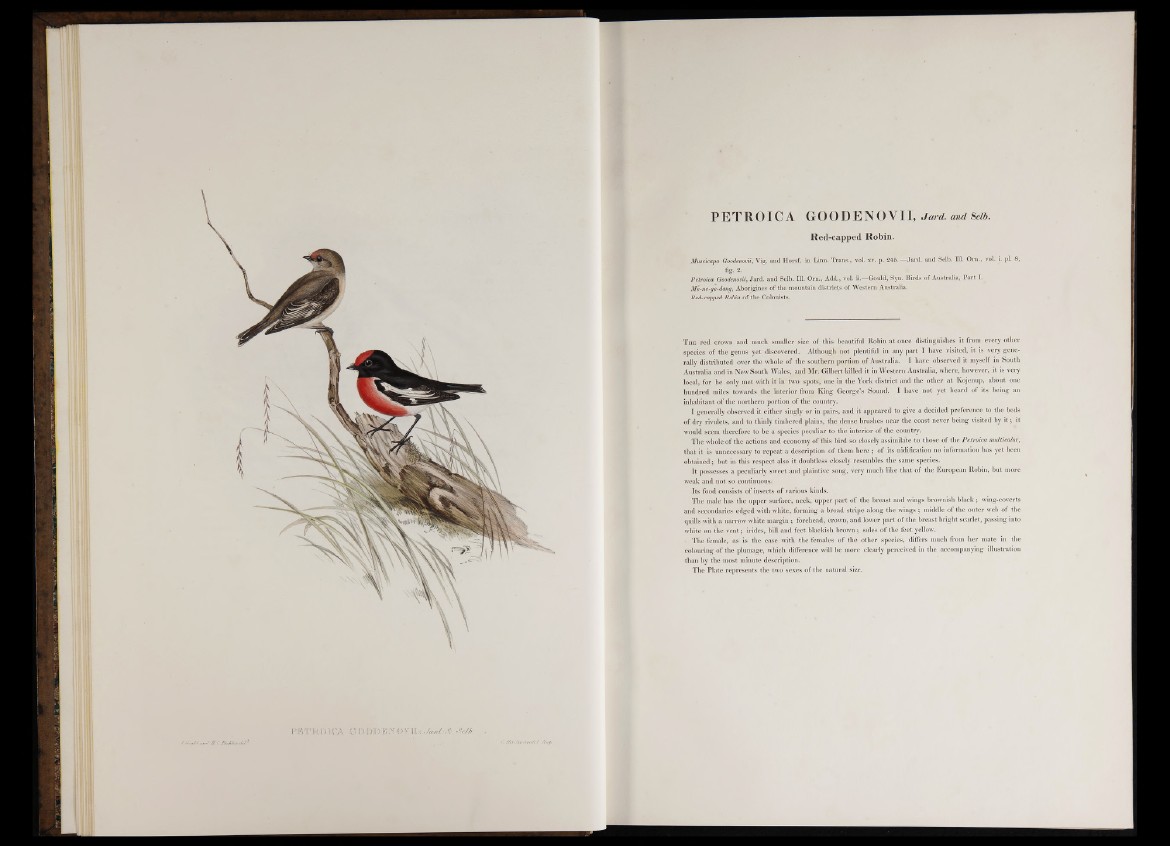
PETROICA GOODENOVII, Jard. and Selb.
Red-capped Robin.
Muscicapa Goodenovii, Vig, and Horsf. in Linn. Trans., vol. xv. p. 245.—Jard. and Selb. 111. Ora., vol. i. pi. 8,
fig- 2.
Petroica Goodenovii, Jard. and Selb. 111. Ora., Add., vol. i i—Gould, Syn. Birds of Australia, Part I.
Me-ne-ge-dang, Aborigines of the mountain districts of Western Australia.
Red-capped Robin of the Colonists.
T he red crown and much smaller size o f this beautiful Robin at once distinguishes it from every other
species o f the genus yet discovered. Although not plentiful in any part I have visited, it is very generally
distributed over the whole of the southern portion o f Australia. I have observed it myself in South
Australia and in New South Wales, aud Mr. Gilbert killed it in Western Australia, where, however, it is very
local, for he only met with it in two spots, one in the York district and the other at Kojenup, about one
hundred miles towards the interior from King George’s Sound. I have not yet heard of its being an
inhabitant o f the northern portion o f the country.
I generally observed it either singly or in pairs, and it appeared to give a decided preference to the beds
of dry rivulets, and to thinly timbered plains, the dense brushes near the coast never being visited by i t ; it
would seem therefore to be a species peculiar to the interior o f the country.
The whole of the actions and economy o f this bird so closely assimilate to those o f the Petroica multicolor,
that it is unnecessary to repeat a description o f them here ; of its nidification no information has yet been
obtained; but in this respect also it doubtless closely resembles the same species.
It possesses a peculiarly sweet and plaintive song, very much like that o f the European Robin, but more
weak and not so continuous;
Its food consists of insects o f various kinds.
The male has the upper surface, neck, upper part of the breast and wings brownish black ; wing-coverts
and secondaries edged with white, forming a broad stripe along the wings ; middle of the outer web o f the
quills with a narrow white margin ; forehead, crown, and lower part o f the breast bright scarlet, passing into
white on the vent; irides, bill and feet blackish brown; soles of the feet yellow.
• The female, as' is the case with the females of the other species, differs much from her mate in the
colouring of the plumage, which difference will be more clearly perceived in the accompanying illustration
than by the most minute description.
The Plate represents the two sexes of the natural size.